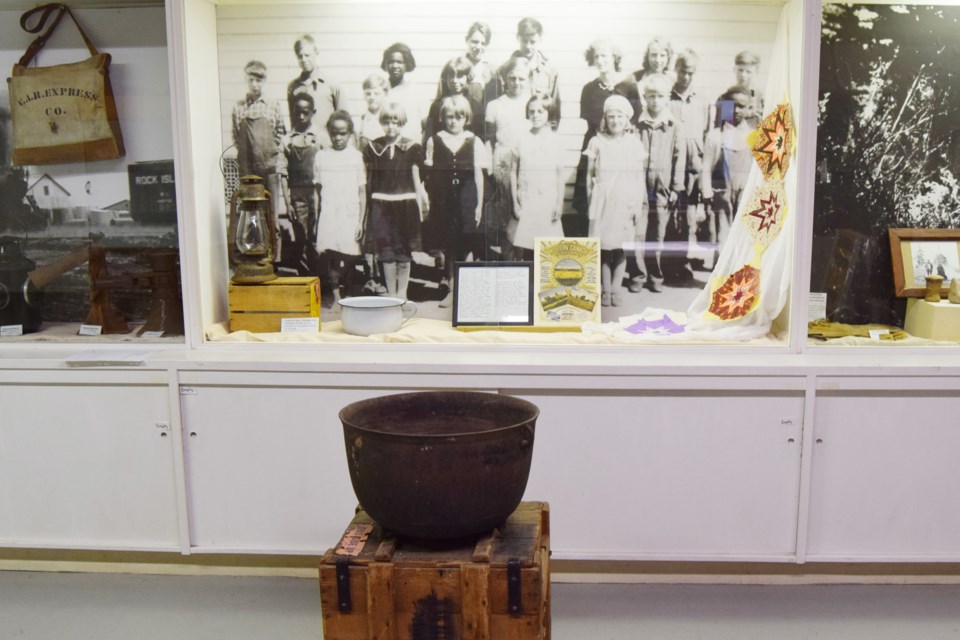BARRHEAD- At one time the Barrhead area had a small but thriving black community.
Unfortunately, not many residents know about this history. The Barrhead Centennial Museum is hoping to change all that.
When the museum reopens to the public, they will be able to see a new display highlighting Barrhead's black community in the early 1900s.
"All these black people came from Oklahoma and other areas of the American deep south and settled all over in Alberta," said museum archivist Barbra Churchill.
The settlers were attracted to the province by the Canadian government advertising land to homestead. Of the about 1,200 black settlers who came to Alberta between 1908 and 1911, a large portion decided to settle in Northern Alberta. Although many opted to settle in areas immediately surrounding Edmonton, there were notable black settlements in Junkins (Wildwood), Keystone (now Brenton), Amber Valley and Campsie, Holmes Crossing and Freedom in the Barrhead region.
"There was this huge outcry in Alberta from everyone from the [Ku Klux Klan], the Edmonton Chamber of Commerce, Frank Oliver to ordinary residents who were protesting all these black people coming to Alberta," she said.
Frank Oliver was an MP serving in the Northwest Territories and Edmonton regions. From 1905 to 1911 he served as both the Superintendent-General of Indian Affairs and the Minister of the Interior in Prime Minister Wilfred Laurier's Liberal government. He also founded the now-defunct Edmonton Bulletin.
Although Churchill knew that there was a black community in the region, she did not know to what extent until the museum was approached by a University of Alberta researcher about four years ago.
The researcher was looking for information about an incident that took place in the late 1910s where a black man had gone to prison for assaulting a teacher.
Sadly, the museum's records of the era and the subject were wanting and Churchill started looking for more information on the black community in the area and to see if there was any conflict or tension between any of the community groups.
"That is when we learned that there was an attempt to do a Jim Crow style school in Campsie in the early 1920s, or late teens," she said.
Jim Crow (named after a black minstrel show) refers to a series of laws that legalized racial segregation.
"The funny thing about it is that there was a pair of friends, one who was a staunch proponent of the school and his best friend who thought it was the stupidest thing ever that kind of embroiled Campsie in this debate," she said.
Eventually, the side supporting segregation won and in 1923, Benton, a Jim Crow school was built in the community.
However, Churchill said she is not sure how widespread the debate was, noting from her research the debate centred around the two friends.
And while segregation side won out, the school had trouble finding traction among the white settlers.
"They defied the segregation rule and sent their kids to the school anyway because they couldn't understand why they should send their children to another school further away when there was one in their community," she said. "There was racial tension, but there was no overt racism because it wasn't practical to have full-on hate for your neighbour because in rural communities people have to depend on their neighbours."
As for the validity of the story that started Churchill's search, she isn't sure. The museum staff has not heard back from the U of A researcher and Churchill has found little evidence, either in artifacts or documentation to confirm if the event took place.
That being said, they have heard some anecdotal stories that do support the claim that it might have occurred.
Before the school was segregated there is a story about a white teacher, who was more than likely a racist and at the very least being overtly rude to black students.
"As the story goes, after his daughter came home crying and the father went to the school and confronted the teacher who was either punched or thrown out the window. He then gets sent to Fort Saskatchewan where he serves a year and when he gets out he said 'it was the most worthwhile time he had ever spent'," Churchill said, adding she has found references to several different versions of the story.
Barry Kerton, TownandCountryToday.com



